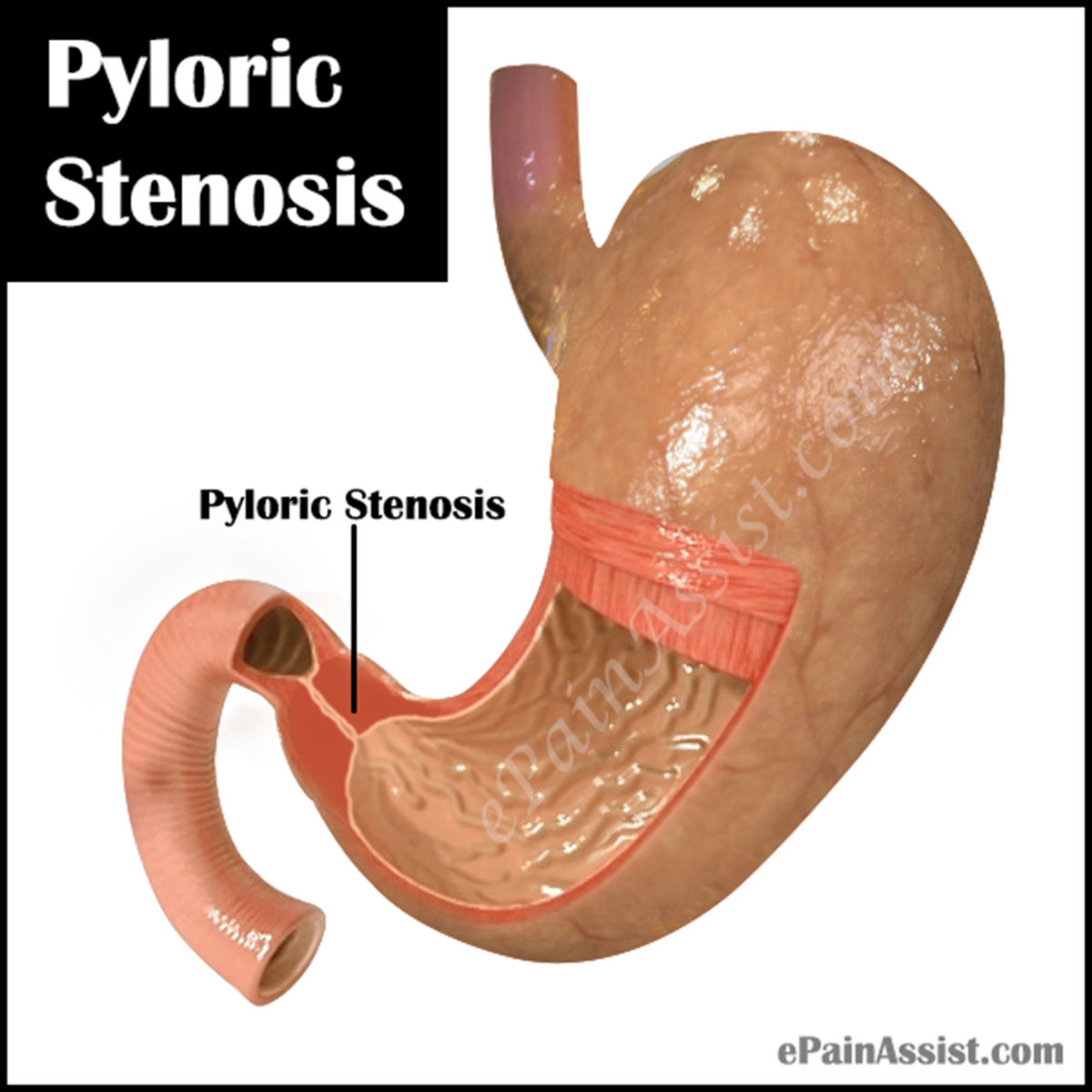What is Pyloric Stenosis or Pylorostenosis?
Pyloric Stenosis or Pylorostenosis is a medical condition, which occurs rarely in infants. The pylorus is a small opening, a muscular valve, which helps in keeping the food back in the stomach till the next stage of the digestive process. In pyloric stenosis, this opening gets affected where the pylorus muscles get thick and prevent the food from entering the baby’s small intestine. Pyloric Stenosis or Pylorostenosis can cause forceful or projectile vomiting, dehydration and weight loss in babies. Infants suffering from this condition always seem to be hungry. Pyloric stenosis is rarely found in babies who are more than 3 months old. This problem can be cured with surgery.

Causes and Risk Factors of Pyloric Stenosis or Pylorostenosis
The cause for Pyloric Stenosis or Pylorostenosis is not known. Genetic and environmental factors are thought to play a role.
Risk Factors for Pyloric Stenosis or Pylorostenosis Include:
- Males are more commonly affected than females.
- Family history plays a role in this condition.
- Using certain antibiotics at an early age, such as erythromycin for whooping cough (pertussis), increases the risk of pyloric stenosis. Mothers who take certain antibiotics in late pregnancy also may have this defect in their babies.
Signs and Symptoms of Pyloric Stenosis or Pylorostenosis
Symptoms commonly appear within three to six weeks after birth.
- Projectile Vomiting: This is forceful ejection of milk or formula up to several feet away. Baby has vomiting usually within 30 minutes after the feed. Initially the vomiting may be mild, but gradually becomes severe as the opening of the pylorus gets narrowed. Sometimes, there may be blood in the vomit.
- Constant Hunger: Babies often feel hungry, especially after vomiting.
- Stomach Contractions: There may be wave-like contractions, known as peristalsis, across the baby’s upper abdomen immediately after feeding and before the vomiting. This occurs when the stomach muscles try to force the food through the narrowed pylorus.
- Dehydration: The baby may cry without shedding tears and may become lethargic. There may be less wet diapers indicating that the baby is dehydrated.
- Change in Bowel Movements: Babies may become constipated, as in pyloric stenosis the food cannot reach the intestines.
- Weight Loss: There is weight loss in the babies.
Serious Symptoms of Pyloric Stenosis or Pylorostenosis
- Repeated vomiting after feeding.
- Forceful/projectile vomiting.
- Baby is lethargic or is less active.
- Irritability.
- Decreased urination or fewer wet diapers.
- Fewer bowel movements.
- Not gaining weight or losing weight.
Tests to Diagnose Pyloric Stenosis or Pylorostenosis
- Physical exam reveals an olive-shaped lump, which is the enlarged pyloric muscle, when examining the baby’s abdomen.
- The doctor can also feel the peristaltic waves or movements in the baby’s abdomen.
- Blood tests are done to check for signs of dehydration.
- Ultrasound is done to confirm the diagnosis.
Treatment for Pyloric Stenosis or Pylorostenosis
Pyloric Stenosis or Pylorostenosis is usually treated with a surgical procedure known as pyloromyotomy where the surgeon cuts the outer layer of the thickened pylorus muscle which permits the inner lining to bulge out allowing the food to pass through to the small intestine. The result of surgery is excellent with few complications. Surgery is commonly arranged on the same day as the diagnosis. Fluid replacement is given before the surgery if the baby is dehydrated or has an electrolyte imbalance.
Pyloromyotomy is commonly done laparoscopically, as it is less invasive and the recovery is faster and leaves a smaller scar when compared to a traditional open surgery. Vomiting may occur for some days after the surgery and the baby may feel hungrier. Possible complications of surgery include bleeding and infection; however, they are rare.

